How Do Non-Specialist Teachers Teach Art?
Whilst talented artists often make great teachers, it’s also the case that teachers who have little direct experience of art can be fantastic facilitators.
Teachers are often fearful of teaching art because of their own lack of expertise. There is an assumption that because their own experience is limited, they won’t be able to teach art effectively. This, in turn, leads teachers to try to gather very specific knowledge that they can both lean on and pass on, in an attempt to feel in control.
In fact, whilst of course the more you know about art, the more experience you have to draw upon, it’s also true that even inexperienced teachers can inspire children to have the most amazing adventures in art. All it takes is a shift in emphasis.
Rather than try to teach specific knowledge, embrace a sense of exploration. Forget the normal hierarchy of the teacher knows and the pupils learns. Instead, you, the teacher, undertake a journey WITH the pupils. Better still, you model that exploration – you tell the children you are exploring, and together, you discover and share what you learn.
Why does this work? Because that is the way many artists themselves work. Artists generally don’t know what it is they are going to discover or create through their work. Instead, they are open. They explore. Of course, there are things you know, and there are things you want to pass on, but you do this through enabling the pupils’ own exploration.
So instead of starting your session with predefined knowledge which you will pass on, start the session with a question: What might happen if?… and go and explore with your pupils. You still have a plan, you still know what you are doing and why you are doing it… but you don’t yet know what will happen, or even quite how you will do it…
And as you explore, you WILL gain experience, which will help feed into the process of becoming a great art facilitator.
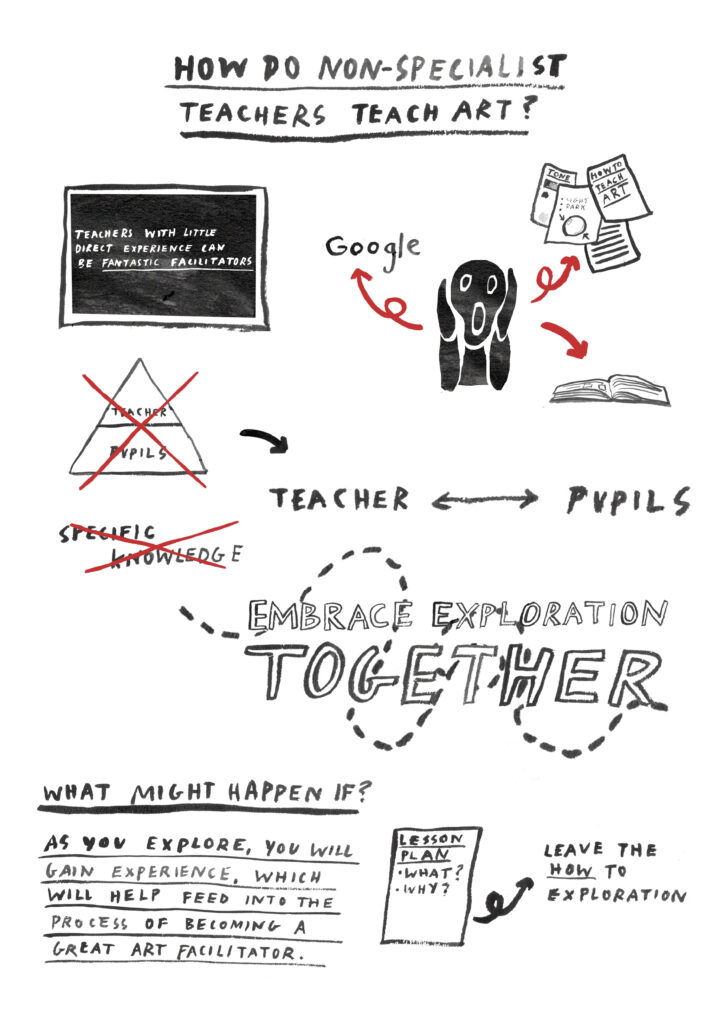
This is a sample of a resource created by UK Charity AccessArt. We have over 1500 resources to help develop and inspire your creative thinking, practice and teaching.
AccessArt welcomes artists, educators, teachers and parents both in the UK and overseas.
We believe everyone has the right to be creative and by working together and sharing ideas we can enable everyone to reach their creative potential.
A collection of imagery and sources designed to encourage children to consider what role a plinth may play in creating or displaying artwork.
Please note that this page contains links to external websites and has videos from external websites embedded. At the time of creating, AccessArt checked all links to ensure content is appropriate for teachers to access. However external websites and videos are updated and that is beyond our control.
Please let us know if you find a 404 link, or if you feel content is no longer appropriate.
We strongly recommend as part of good teaching practice that teachers watch all videos and visit all websites before sharing with a class. On occasion there may be elements of a video you would prefer not to show to your class and it is the teacher’s responsibility to ensure content is appropriate. Many thanks.
*If you are having issues viewing videos it may be due to your schools firewall or your cookie selection. Please check with your IT department.*
This resource is free to access and is not a part of AccessArt membership.



What Is A Plinth?
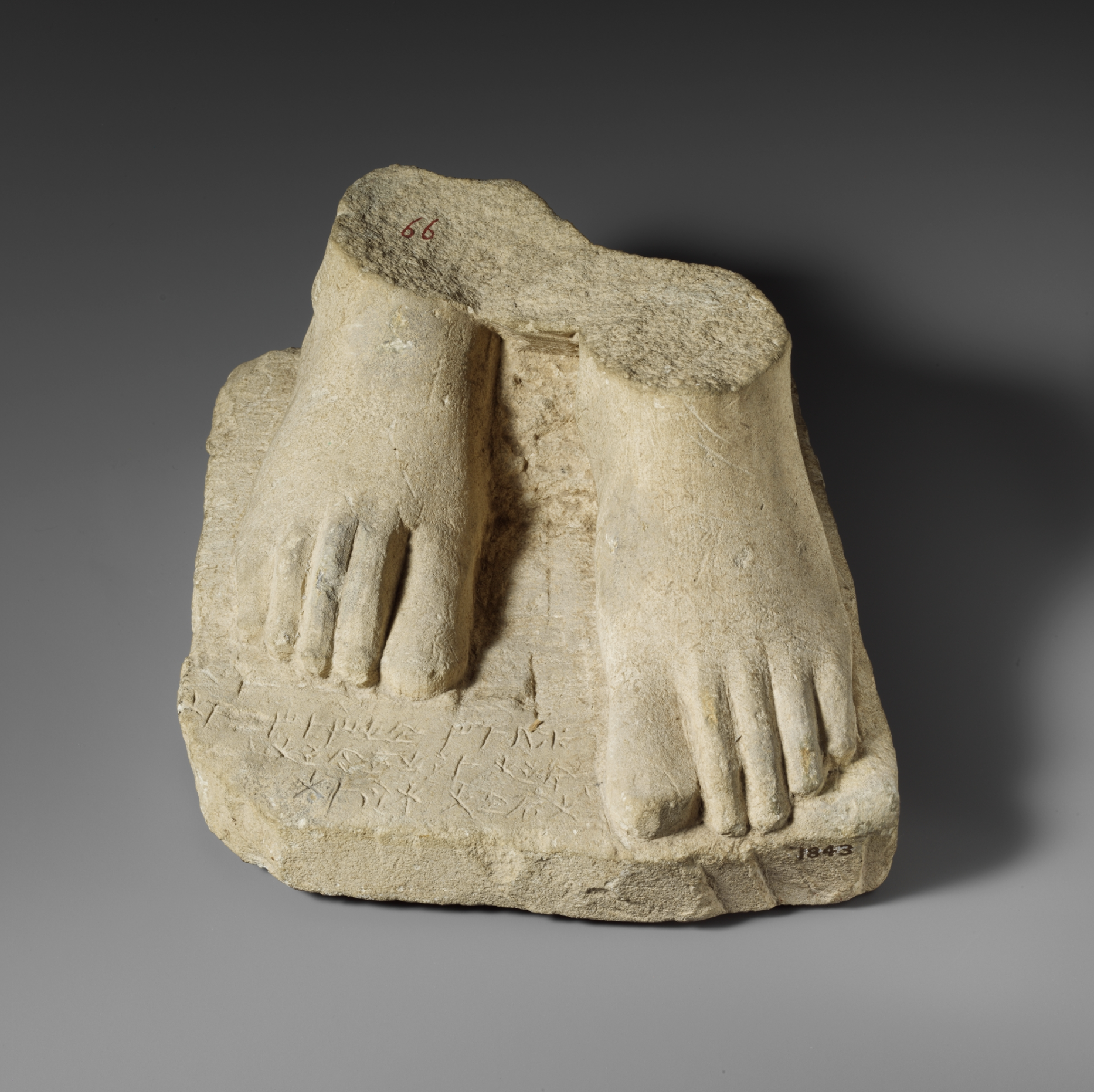
“Limestone plinth with the feet of a male statuette” Licensed under CC0 1.0
In the traditional sculptural sense, plinths are usually heavy boxes or bases made from stone, wood or metal, which raise a sculpture above the ground.
Plinths sometimes protect the sculpture from the elements, such as a sculpture raised out of the way of puddles of rain in the street.
More often, the role of a plinth is to give the sculpture some kind of status. By raising the sculpture to a certain level, the sculptor can decide how the viewer interacts with the artwork.
Plinths also help create a separation between the ordinary everyday world around us and the art “object”.
Seeing an object on a plinth might encourage us to view that object as an artwork – as something special.
Questions to Ask Children
Have you seen any sculpture on a plinth in and around the place where you live?
Why do you think those sculptures are on plinths? How does the way the sculpture is displayed affect how you think about the sculpture?
Imagine two peas. One is on the kitchen floor, but an identical pea is on a plinth in a gallery. How does it change how you think about the pea?
The Fourth Plinth
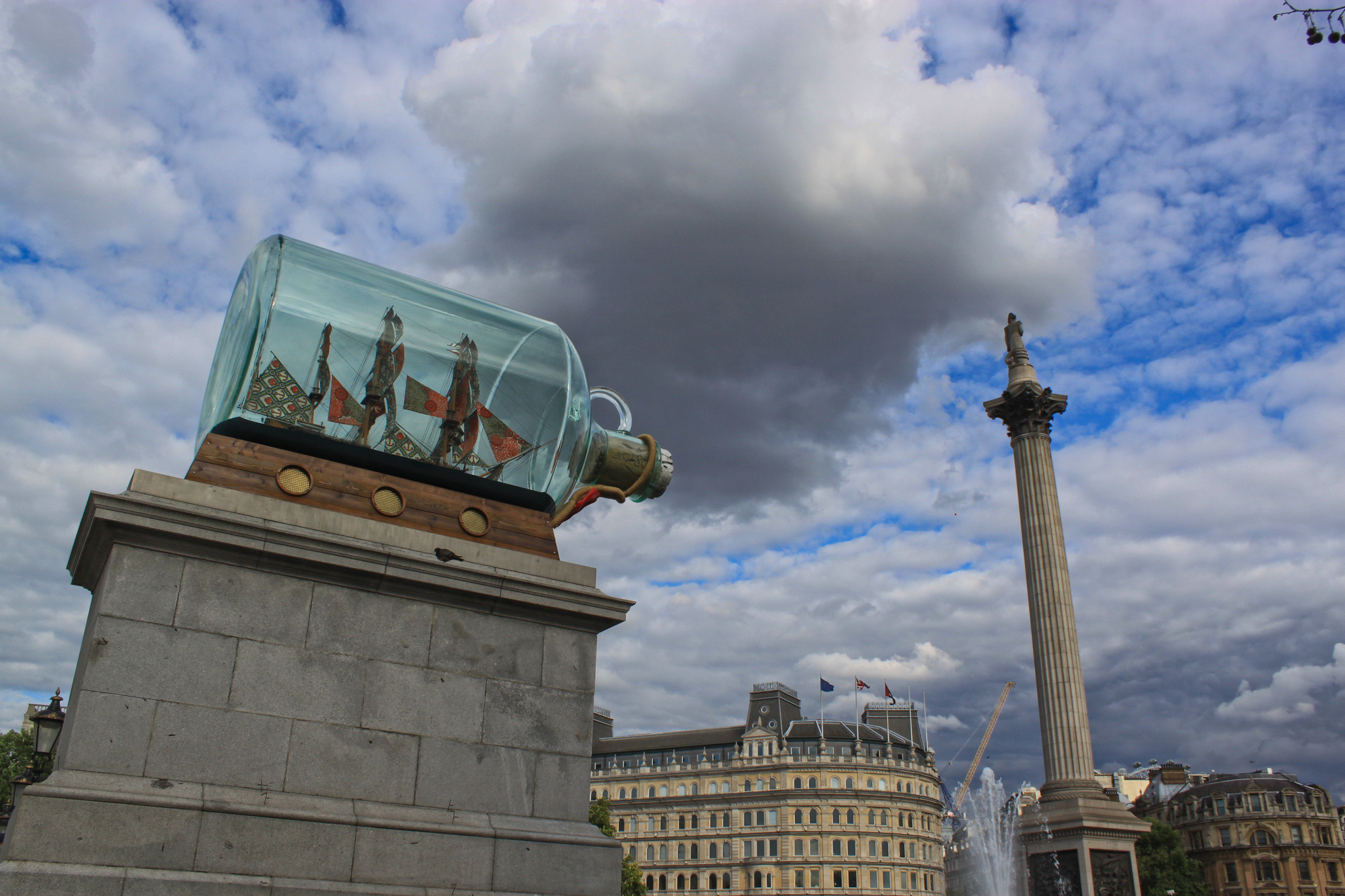
Photo of “Nelson’s Ship in a Bottle,” by Yinka Shonibare, Fourth Plinth, Trafalgar Square, London by Andy Hay
What is The Fourth Plinth?
The Fourth Plinth is considered to be one of the world’s largest ongoing public art commissions. Its main aim is to bring contemporary art to the public and to encourage debate about what art is.
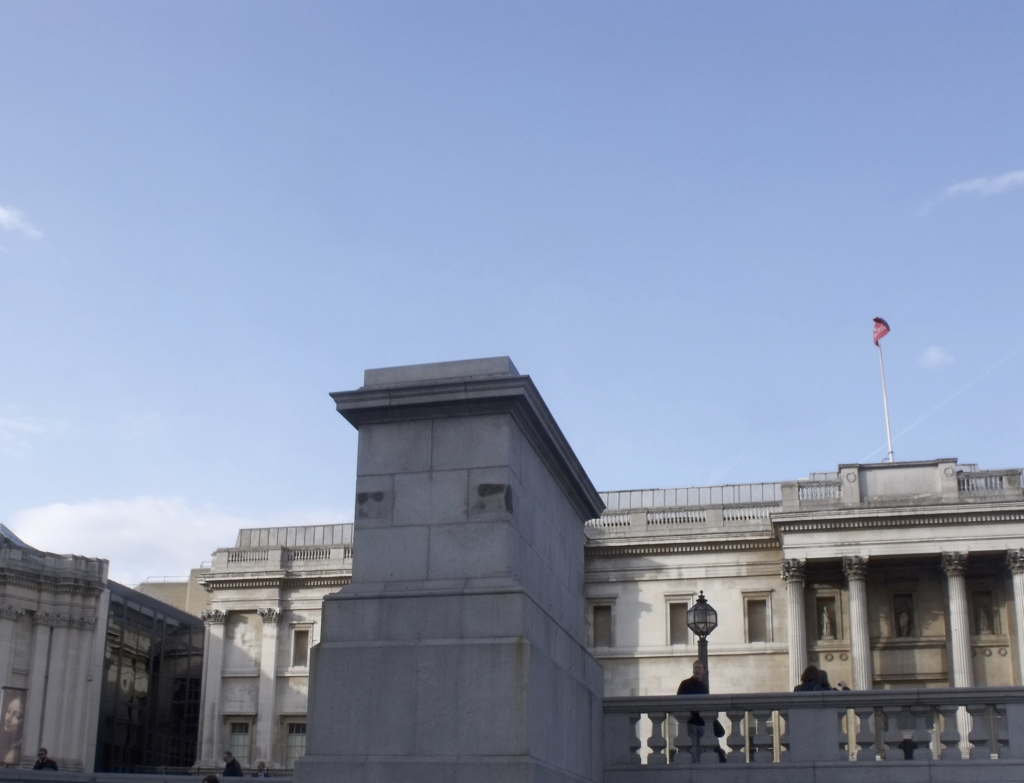
The “fourth plinth” was originally intended to hold a sculpture of a horse belonging to William IV, but the sculpture was never displayed due to lack of money. For over 150 years the plinth remained empty, until in 1998, the Royal Society for the Encouragement of Arts, Manufactures and Commerce (RSA) commissioned three contemporary sculptures to be displayed temporarily on the plinth. The legacy of those three sculptures was a rolling programme called the Fourth Plinth.
Take a look at the Fourth Plinth website to explore some recent commissions and explore the work of one Fourth Plinth artist, Antony Gormley below.
Antony Gormley, The Fourth Plinth

“One and Other” by Antony Gormley, Image by Feggy Art
Whilst Antony Gormley usually makes sculpture out of more traditional materials like steel, he was commissioned as part of the Fourth Plinth to produce a rather different kind of art.
Instead of working in traditional materials, Gormley used the plinth as a focus for creating an artwork which “became a portrait of the UK, now”. For 100 days in 2009, 24 hours a day, Gormley and the team coordinated members of the public to take stage on the plinth for an hour at a time. They could do whatever they liked, using the plinth to give their expression a literal and metaphorical platform.
Through “One & Other”, Gormley hoped that by giving the public free will to express their hopes and fears for what might be, a “portrait of the nation” would be revealed.
Questions to Ask Children
How would you use your time if you were given an hour on the plinth?
The Fourth Plinth Challenge
Can you find a “plinth” at school and coordinate a similar project?
How would children and teachers “apply” for a slot on your plinth?
Who would decide who gets a slot and what would your criteria be?
How long would each slot last?
How would you encourage an audience?
How would you document the event?
This Talking Points Is Used In…
Pathway: The Art of Display
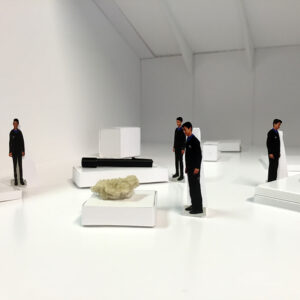
using sketchbooks to make visual notes
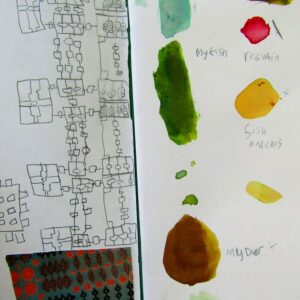
Show me what you see
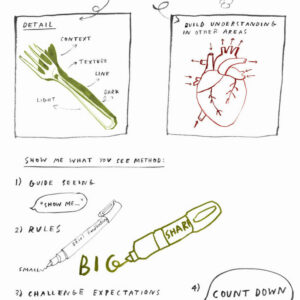
A collection of imagery and sources designed to introduce children to different types of sculpture.
Please note that this page contains links to external websites and has videos from external websites embedded. At the time of creating, AccessArt checked all links to ensure content is appropriate for teachers to access. However external websites and videos are updated and that is beyond our control.
Please let us know if you find a 404 link, or if you feel content is no longer appropriate.
We strongly recommend as part of good teaching practice that teachers watch all videos and visit all websites before sharing with a class. On occasion there may be elements of a video you would prefer not to show to your class and it is the teacher’s responsibility to ensure content is appropriate. Many thanks.
*If you are having issues viewing videos it may be due to your schools firewall or your cookie selection. Please check with your IT department.*
This resource is free to access and is not a part of AccessArt membership.



What is Sculpture?
Interactive Cloud Sculpture by Caitlind r.c. Brown & Wayne Garrett
“Interactive Cloud Sculpture” made of 6000 lightbulbs by Canadian artists Caitlind r.c. Brown & Wayne Garrett
Questions to Ask Children
Describe what you see. Think about the gallery space as well as the sculpture itself.
How would it feel to be in that space, interacting with the sculpture?
What do you think the artists are trying to say through the artwork?
Why do you think two sculptors collaborated on this piece?
How does it make you feel? What does it make you think?
Floating Piers by Christo and Jeanne-Claude
Floating Piers by Christo and Jeanne-Claude, Italy, 2016
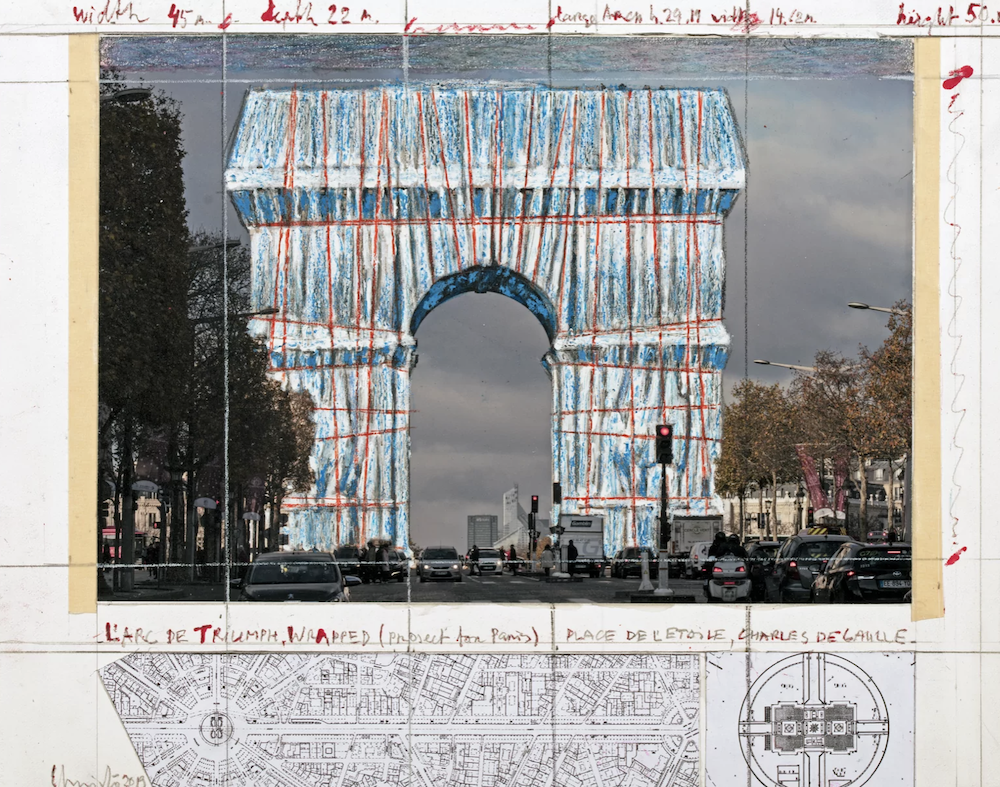
L’Arc De Triomphe Wrapped by Christo and Jeane-Claude, Paris, 1961
Christo and Jeanne-Claude are artists who have become known for wrapping large objects/buildings/environments.
Christo started out wrapping objects like chairs and books, interested in how the wrapping changed the meaning. More recently the large projects, which can take years of planning, are often made just for the purpose of enabling us to look at the world in new ways.
Christo says: “We make beautiful things, unbelievably useless, totally unnecessary.”
Questions to Ask Children
What have the artists done here?
How many people do you think were involved in making this artwork? What jobs did they have to do?
How long do you think this artwork will last? Do you think the artists minded making an artwork which won’t last forever?
How do you think the visitors feel? How would you feel if you were there? What would the yellow bouncy path make you want to do?
How do you think the people felt when they returned to the “normal” landscape around them? Would they have been changed by the artwork?
How do you think it looks from above?
What do you think the artists were trying to say through the artwork?
Dev Harlan
“Parmenides I”, Dev Harlan, 2011
Parmenides I is a light sculpture exhibited at Christopher Henry Gallery, New York.
Questions to Ask Children
What can you see in the video above?
Can you imagine how the artwork is made?
How does it make you feel?
How long do you have to look at the sculpture before it has an affect on you? If you saw a still image of the sculpture would you feel the same way?
Food Sculptures by Nicole Dyer
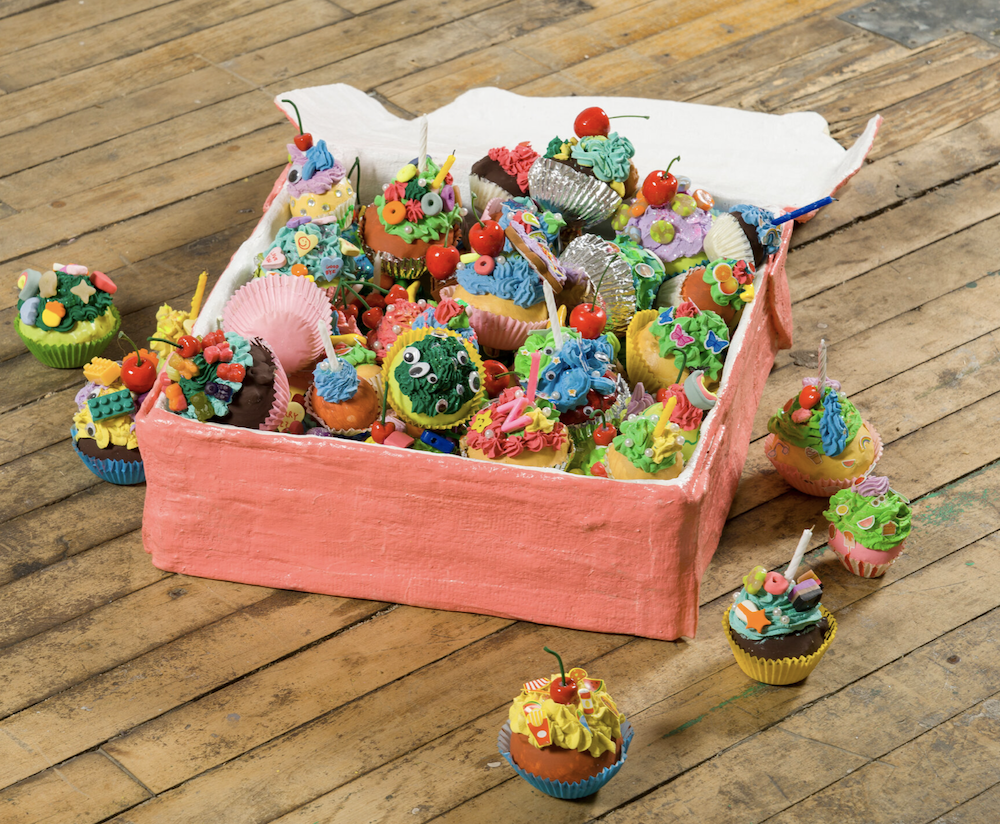
Food Sculptures by Nicole Dyer
Nicole Dyer makes sculptures inspired by food. See more of their work here “Talking Points:Nicole Dyer“.
Questions to Ask Children
Describe what you see.
How do the sculptures make you feel?
How do you think the artist made the sculptures?
Faith Bebbington
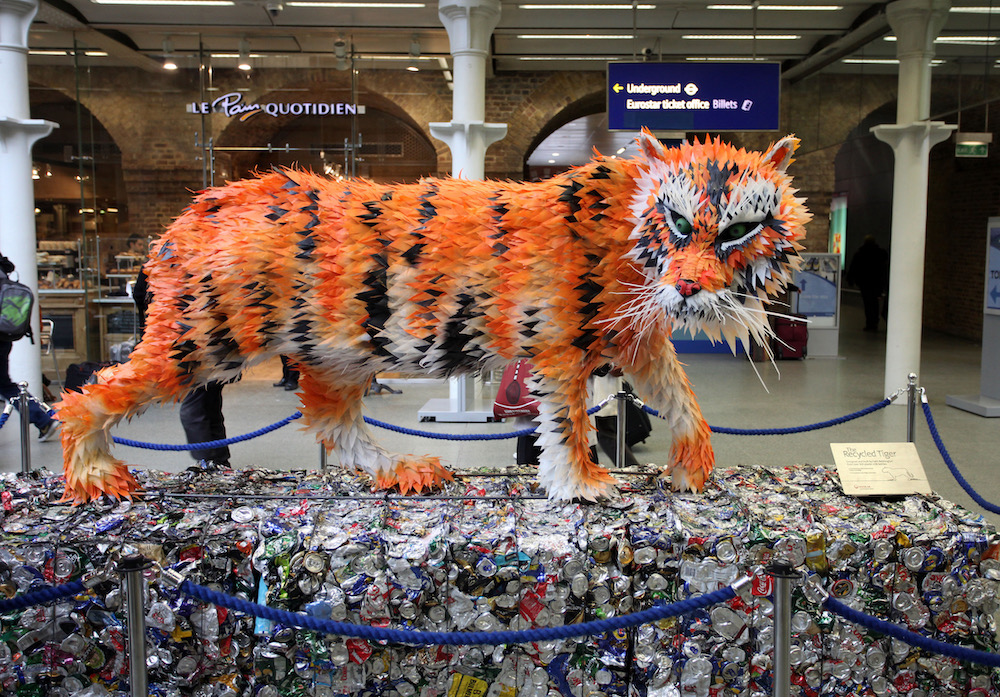
Sculptures by Faith Bebbington
Faith Bebbington is best known for her sustainable practise; her large sculptures utilise lots of waste materials, with her biggest sculpture to date re-using over 2500 deconstructed plastic milk bottles!
Questions to Ask Children
Describe what you see.
How do the sculptures make you feel?
What do you think the artist is trying to say through her work?
What other recycled or waste materials could we use to make sculpture?
This Talking Points Is Used In…
Pathway: Playful Making
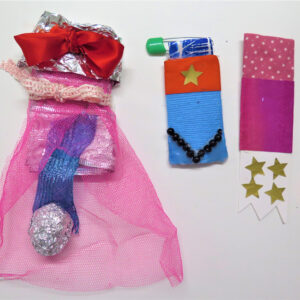
using sketchbooks to make visual notes
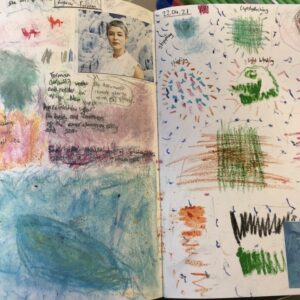
Show me what you see

A collection of imagery and sources designed to stimulate conversation around the idea of sculpture used to help us remember.
Please note that this page contains links to external websites and has videos from external websites embedded. At the time of creating, AccessArt checked all links to ensure content is appropriate for teachers to access. However external websites and videos are updated and that is beyond our control.
Please let us know if you find a 404 link, or if you feel content is no longer appropriate.
We strongly recommend as part of good teaching practice that teachers watch all videos and visit all websites before sharing with a class. On occasion there may be elements of a video you would prefer not to show to your class and it is the teacher’s responsibility to ensure content is appropriate. Many thanks.



Cretto di Burri by Italian Sculptor Alberto Burri
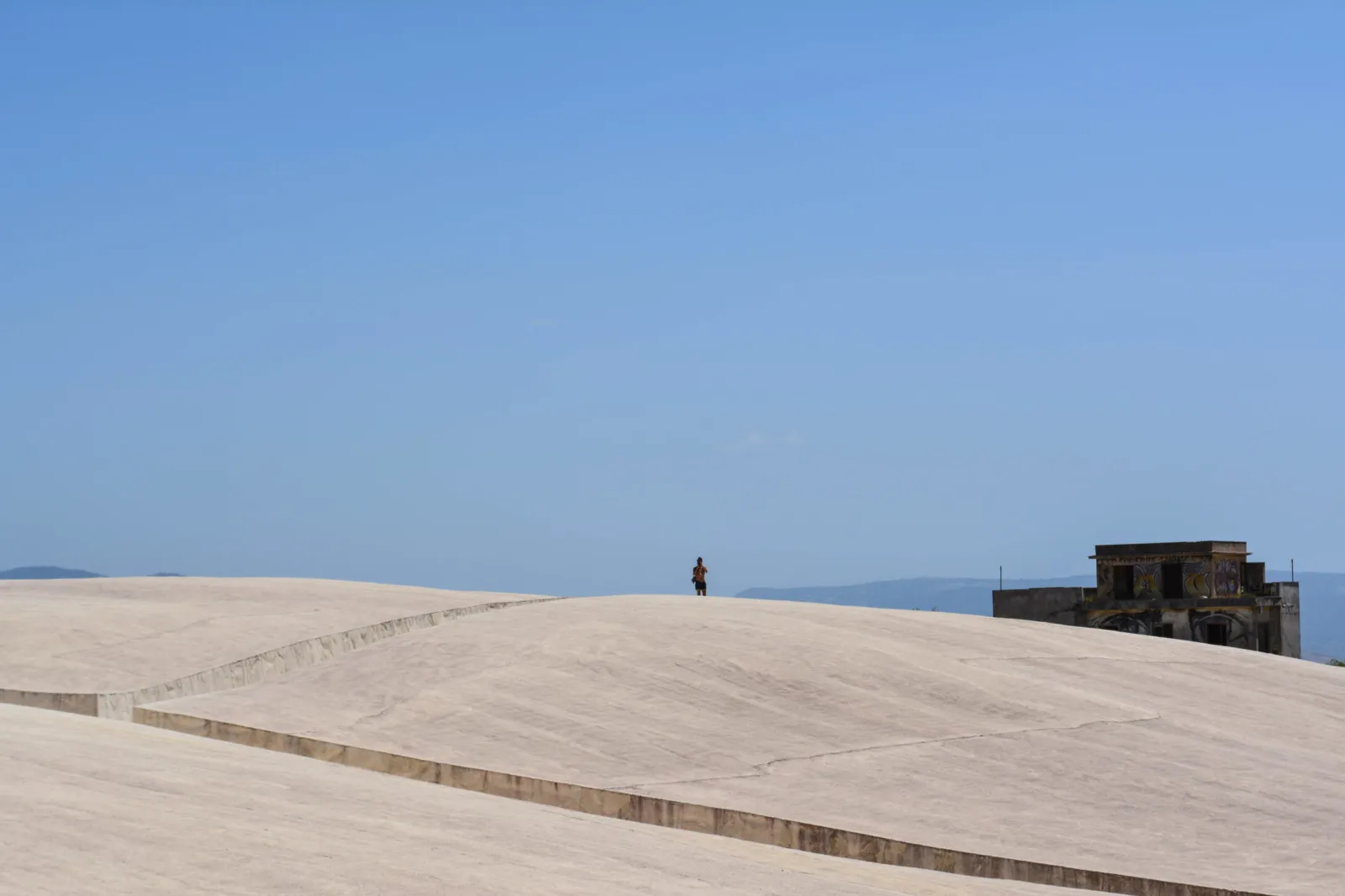
Alberto Burri – Cretto di Burri (Crack of Burri), 1984–2015, concrete, 1.50 x 350 x 280 m (4.9 x 1,150 x 920 ft), Gibellina, Sicily, Italy, photo: CC BY-NC-SA 2.0 by Luca Di Ciaccio
The Cretto di Burri alias Crack of Burri is a landscape artwork by Italian visual artist, painter, sculptor, and physician Alberto Burri
Located in Sicily, Italy, the project began in 1984, only to stall in 1989 when funds ran out. It was finally completed 30 years later in 2015.
This piece of land art sculpture, made from cast concrete, commemorated the destruction of the city of Gibellina in 1968 by the Belice earthquake.
The quake destroyed the landscape and left thousands of families homeless.
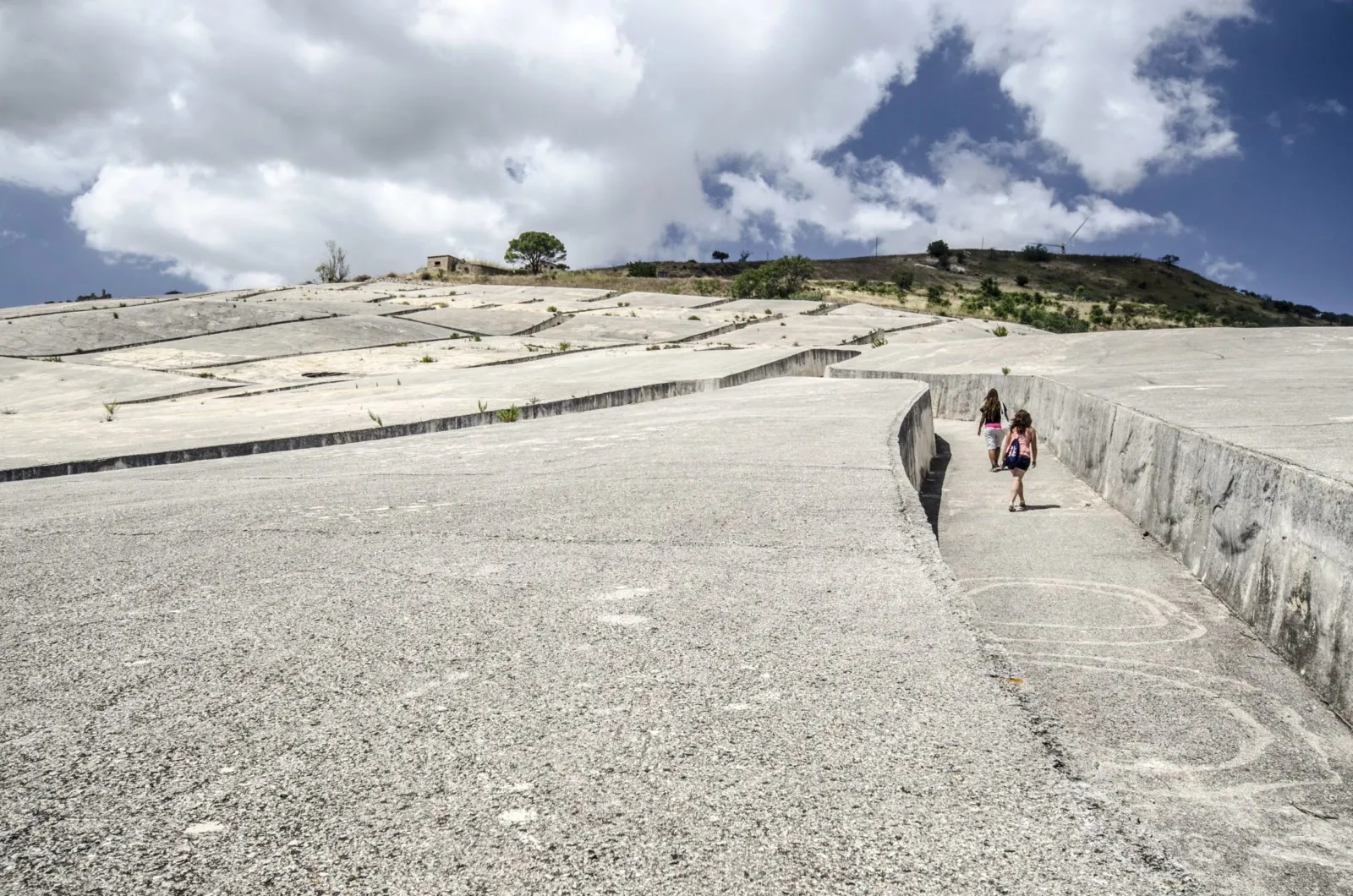
Alberto Burri – Cretto di Burri (Crack of Burri), 1984–2015, concrete, 1.50 x 350 x 280 m (4.9 x 1,150 x 920 ft), Gibellina, Sicily, Italy, photo: CC BY-NC-ND 2.0 by Michele Cannone
Alberto Burri was an artist involved in the creation of a new town, 20 km to the west of the destroyed town. This article describes how the mayor was so impressed with Burri that he invited him to make a piece of art to commemorate the catastrophic event. At first Burri wasn’t sure, but after he visited the destroyed area he said:
I almost felt like crying and immediately the idea came to me: here, here I feel that I could do something. I would do this: we compact the rubble that is so much a problem for everyone, we arm it well, and with the concrete, we make an immense white crack, so that it remains a perennial memory of this event.
Burri and his workers collected the rubble and redistributed it, casting it into huge cement blocks to recreate the old streets.
“The cracked white concrete of this monument memorializes and conceptualizes the ordeal and suffering of the Belice earthquake, with the slits marking not just the literal streets and corridors of the old town but also the violence done to the land, people, as well as profoundly to the cultural memory of the site.” https://publicdelivery.org/cretto-di-burri/
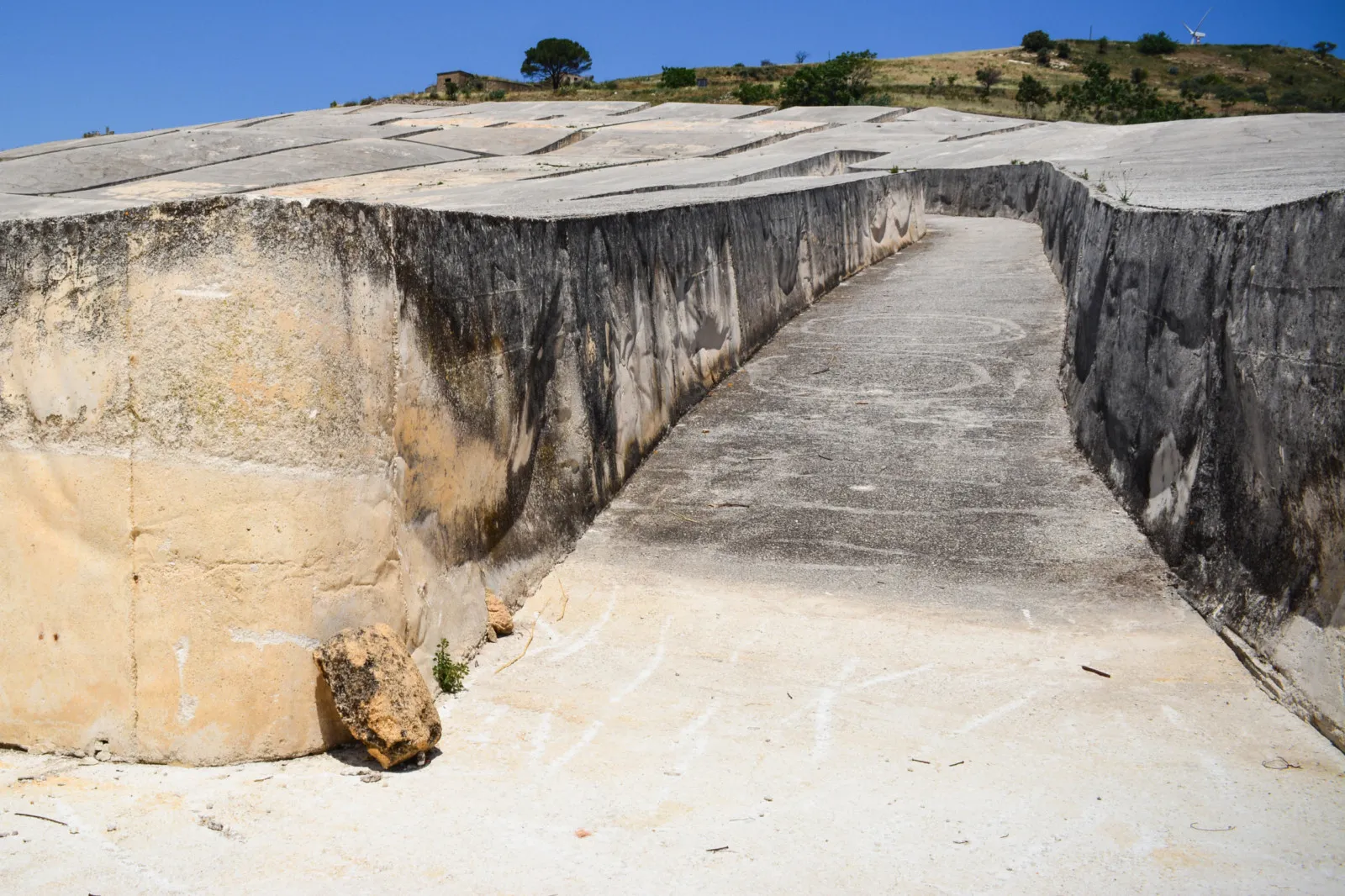
Alberto Burri – Cretto di Burri (Crack of Burri), 1984–2015, concrete, 1.50 x 350 x 280 m (4.9 x 1,150 x 920 ft), Gibellina, Sicily, Italy, photo: CC BY-NC-SA 2.0 by Luca Di Ciaccio
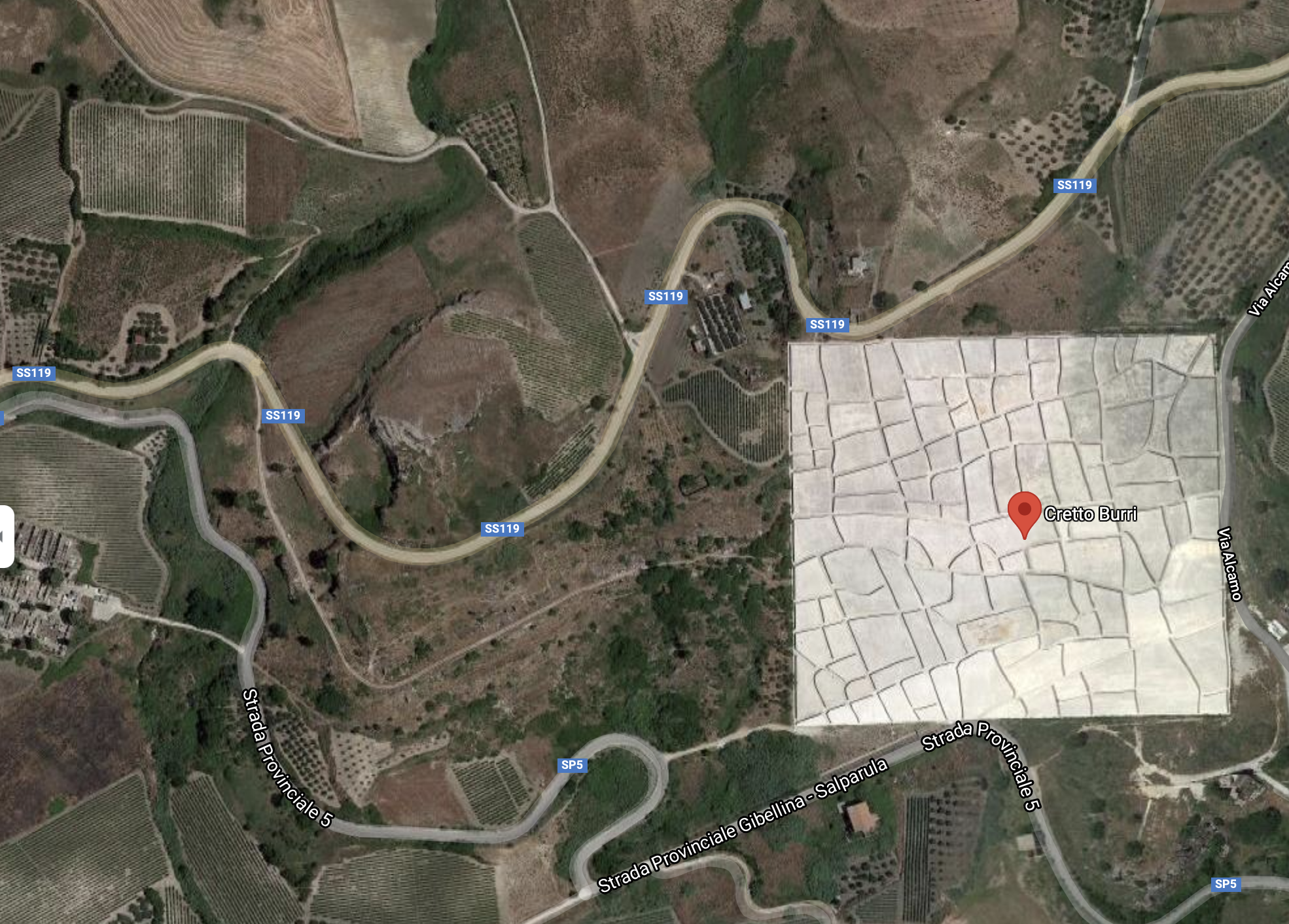
Questions to Ask Children
Describe what you see.
Which words would you use to describe the whole piece?
Can you imagine walking through the structure? Flying over it? What would it smell like? Feel like?
What do you think the artist is trying to say with this artwork?
How does it make you feel?
What is the environmental impact of the piece?
A collection of imagery and sources designed to encourage children to consider how artists are inspired by birds.
Please note that this page contains links to external websites and has videos from external websites embedded. At the time of creating, AccessArt checked all links to ensure content is appropriate for teachers to access. However external websites and videos are updated and that is beyond our control.
Please let us know if you find a 404 link, or if you feel content is no longer appropriate.
We strongly recommend as part of good teaching practice that teachers watch all videos and visit all websites before sharing with a class. On occasion there may be elements of a video you would prefer not to show to your class and it is the teacher’s responsibility to ensure content is appropriate. Many thanks.
*If you are having issues viewing videos it may be due to your schools firewall or your cookie selection. Please check with your IT department.*
This resource is free to access and is not a part of AccessArt membership.




Ernst Haekel
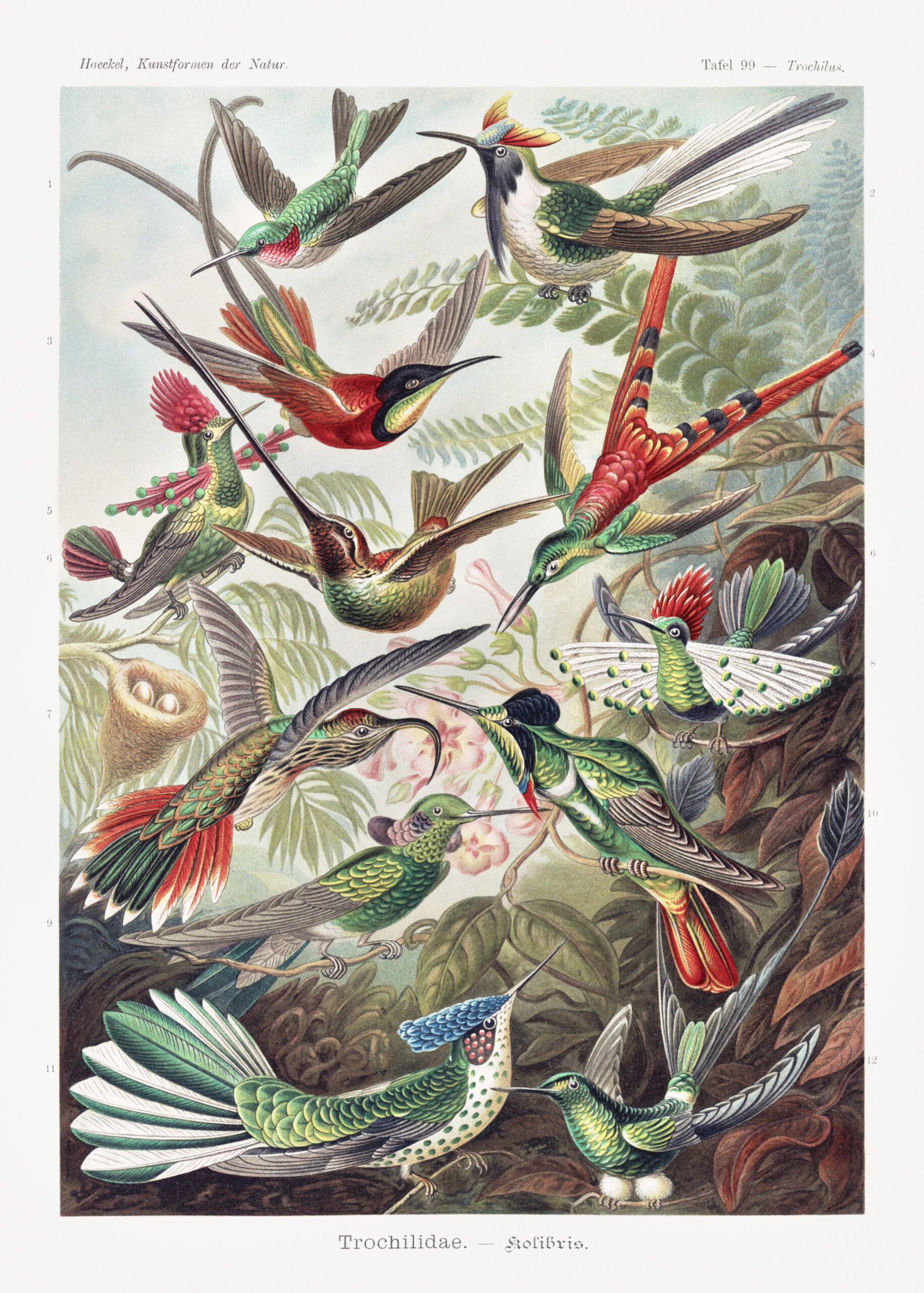
Trochilidae–Kolibris from Kunstformen der Natur (1904) by Ernst Haeckel. Original from Library of Congress. Ernst Haekel was a was a German zoologist, naturalist, eugenicist, philosopher, physician, professor, marine biologist and artist. Wiki
Questions to Ask Children
Describe what you see.
Look at the artwork as a whole – which words would you use to describe the whole piece?
Tell me about the details you like.
What do you think the artist is trying to say with this artwork?
How does it make you feel?
Hoang Tien Quyet
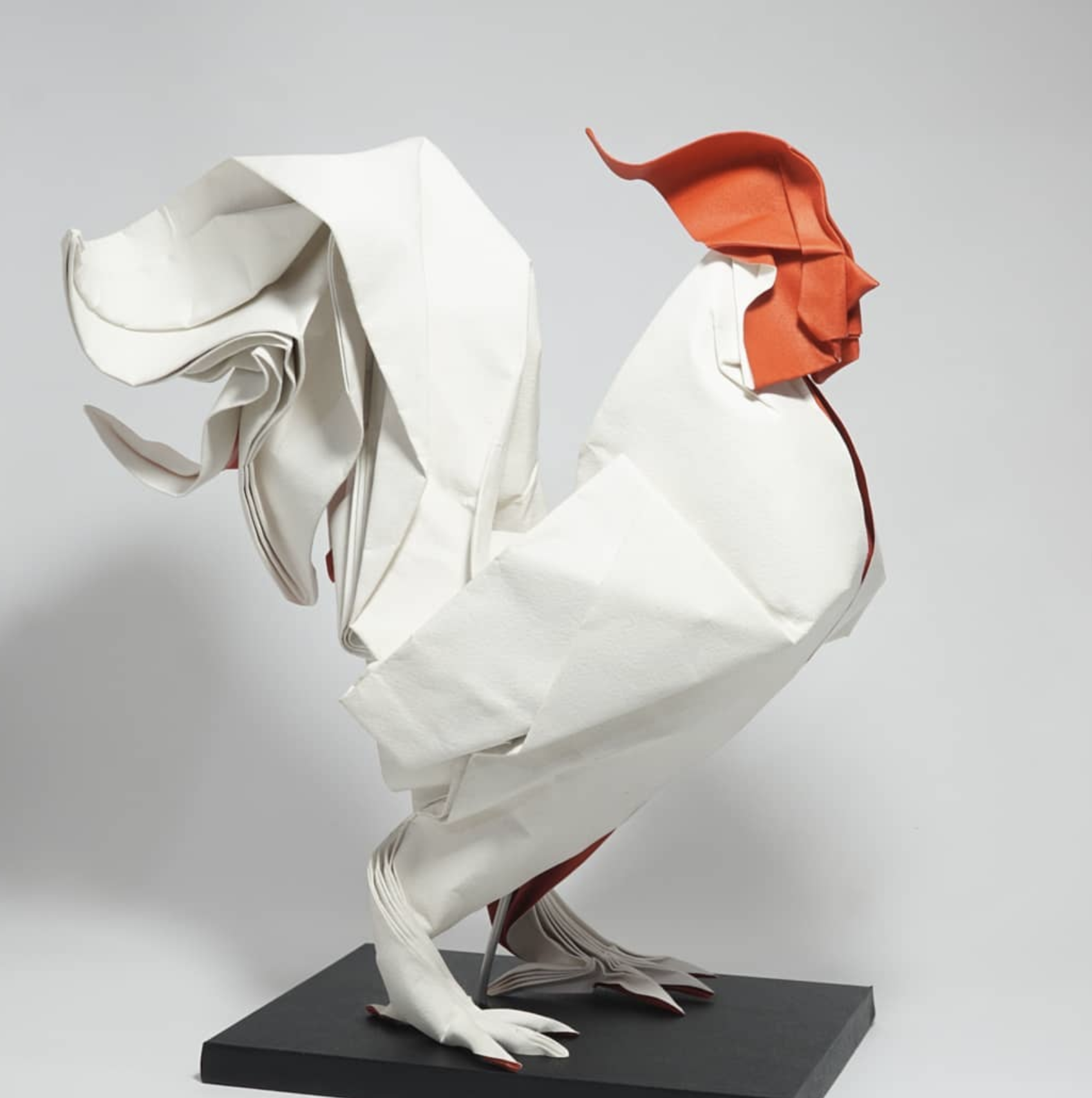
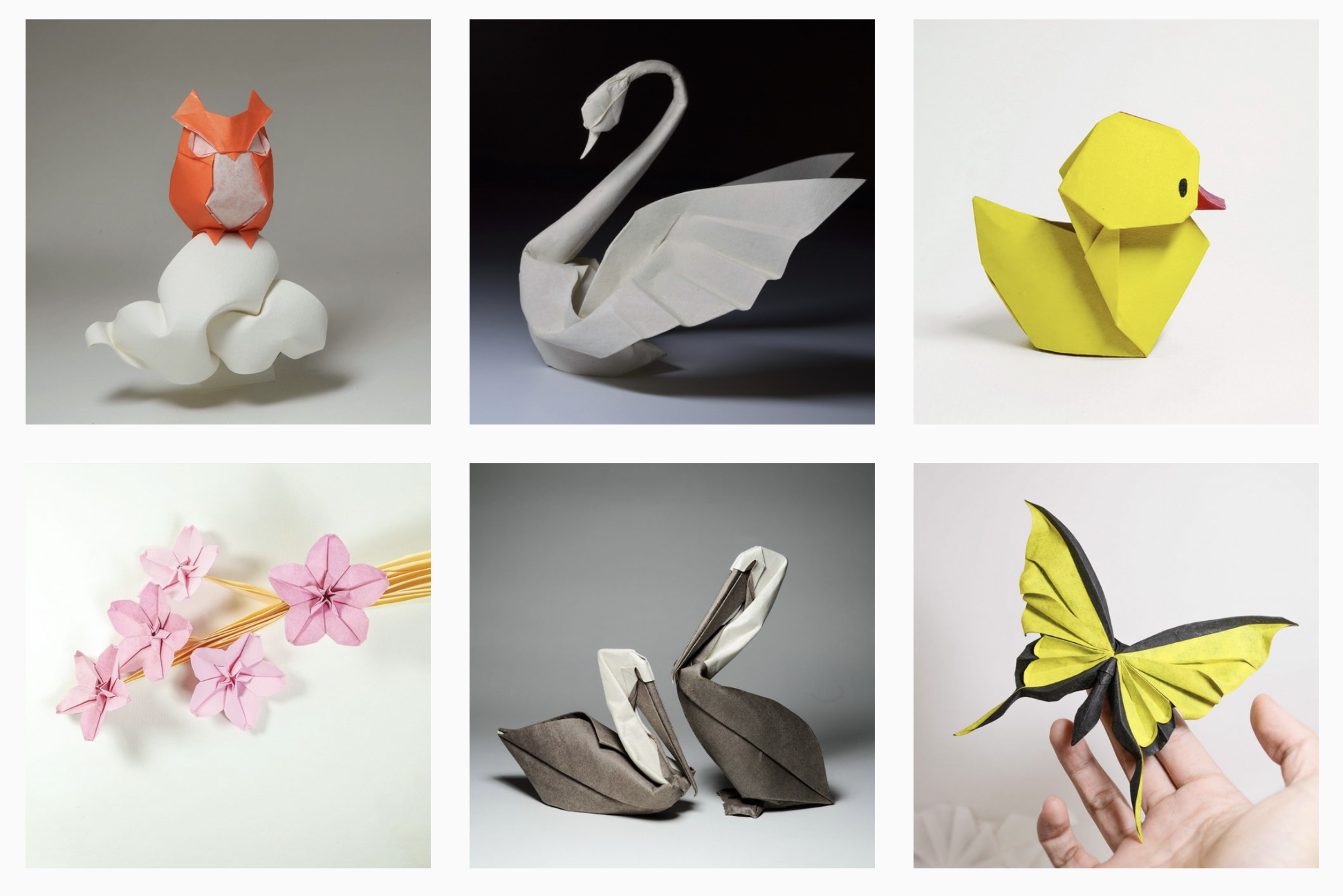
Hoang Tien Quyet, Origami artist, Vietnam. Hoang uses wet paper to make his origami creations. See his work at https://htquyet.origami.vn/tagged/designs
Questions to Ask Children
What do you think the sculptures by Hoang are made out of ?
How do you think he made them?
How do you think he decides how much detail to include or leave out?
How do they make you feel?
What do you think the artist is trying to say with this artwork?
John James Audubon
John James Audubon was an American self-trained artist, naturalist, and ornithologist. His combined interests in art and ornithology turned into a plan to make a complete pictorial record of all the bird species of North America. Wiki
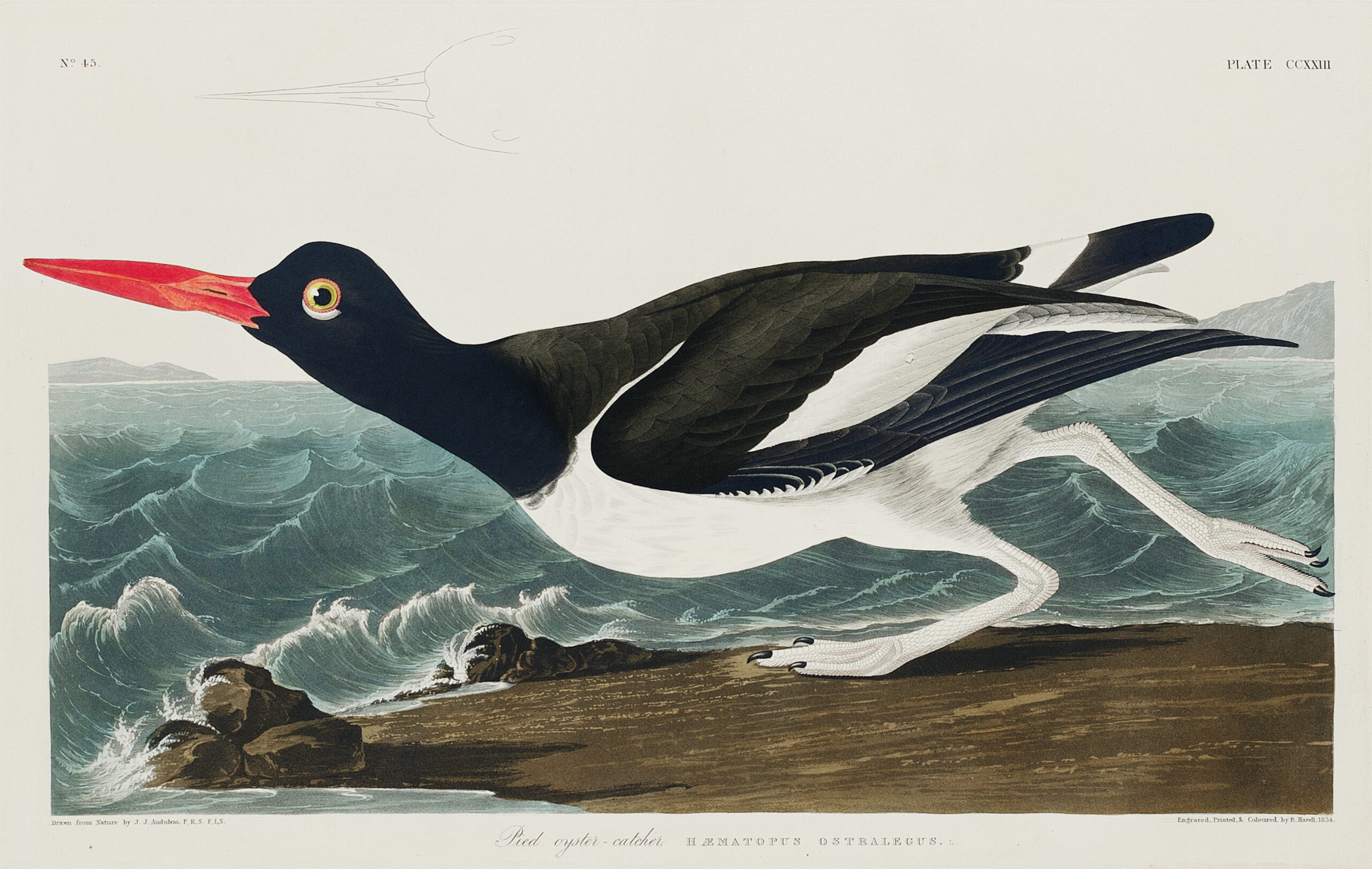
Pied oyster-catcher from Birds of America (1827) by John James Audubon, etched by William Home Lizars. Original from University of Pittsburg.
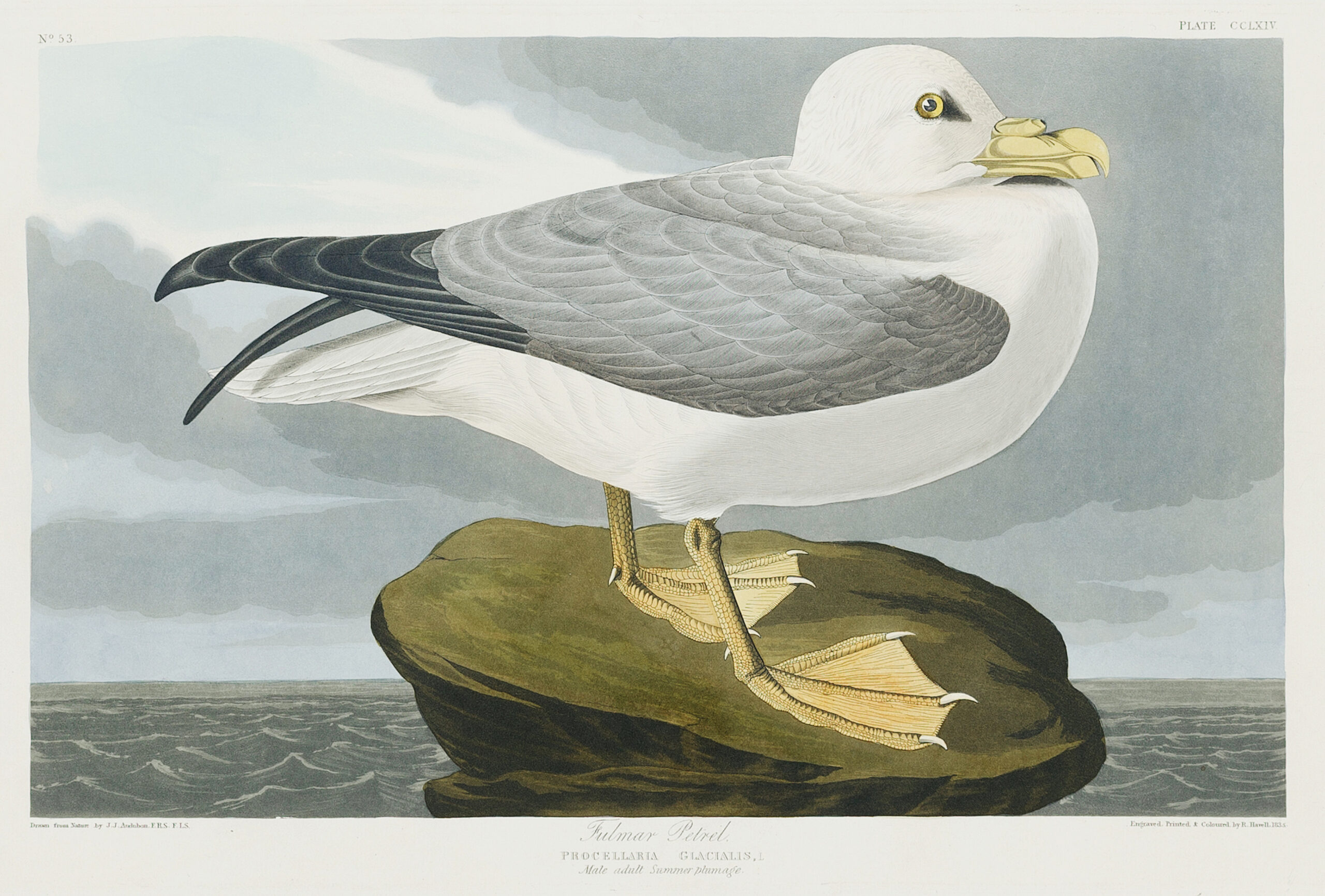
Fulmar Petrel from Birds of America (1827) by John James Audubon, etched by William Home Lizars. Original from University of Pittsburg.
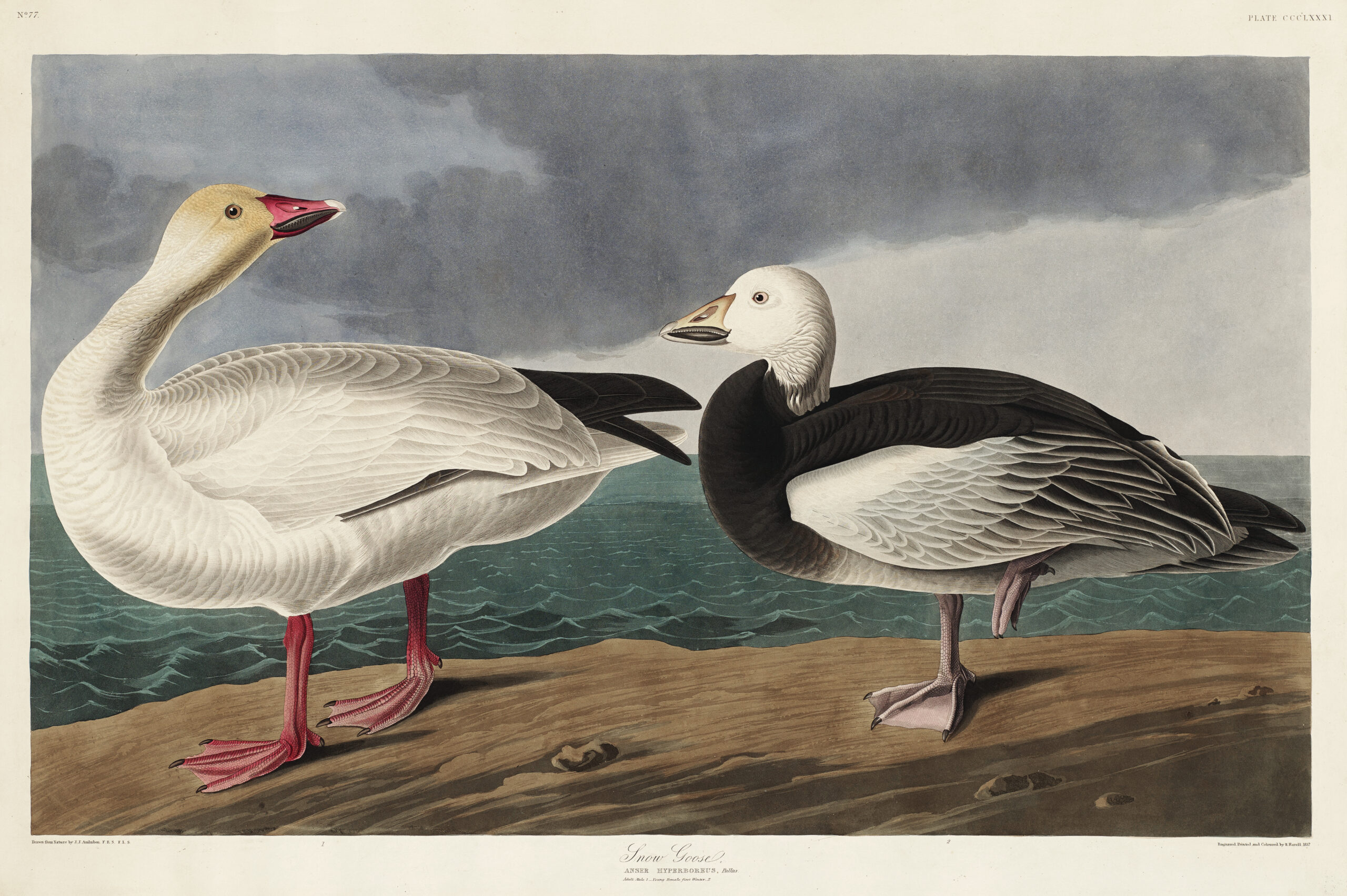
Snow Goose from Birds of America (1827) by John James Audubon, etched by William Home Lizars. Original from University of Pittsburg.
Questions to Ask Children
Describe what you see.
Look at the artwork as a whole – which words would you use to describe the whole piece?
Tell me about the details you like.
What materials has the artist used?
What do you think the artist is trying to say with this artwork?
Can you describe the nature/personality of the bird? Why do you think that? How has the artist made you think that?
Pejac
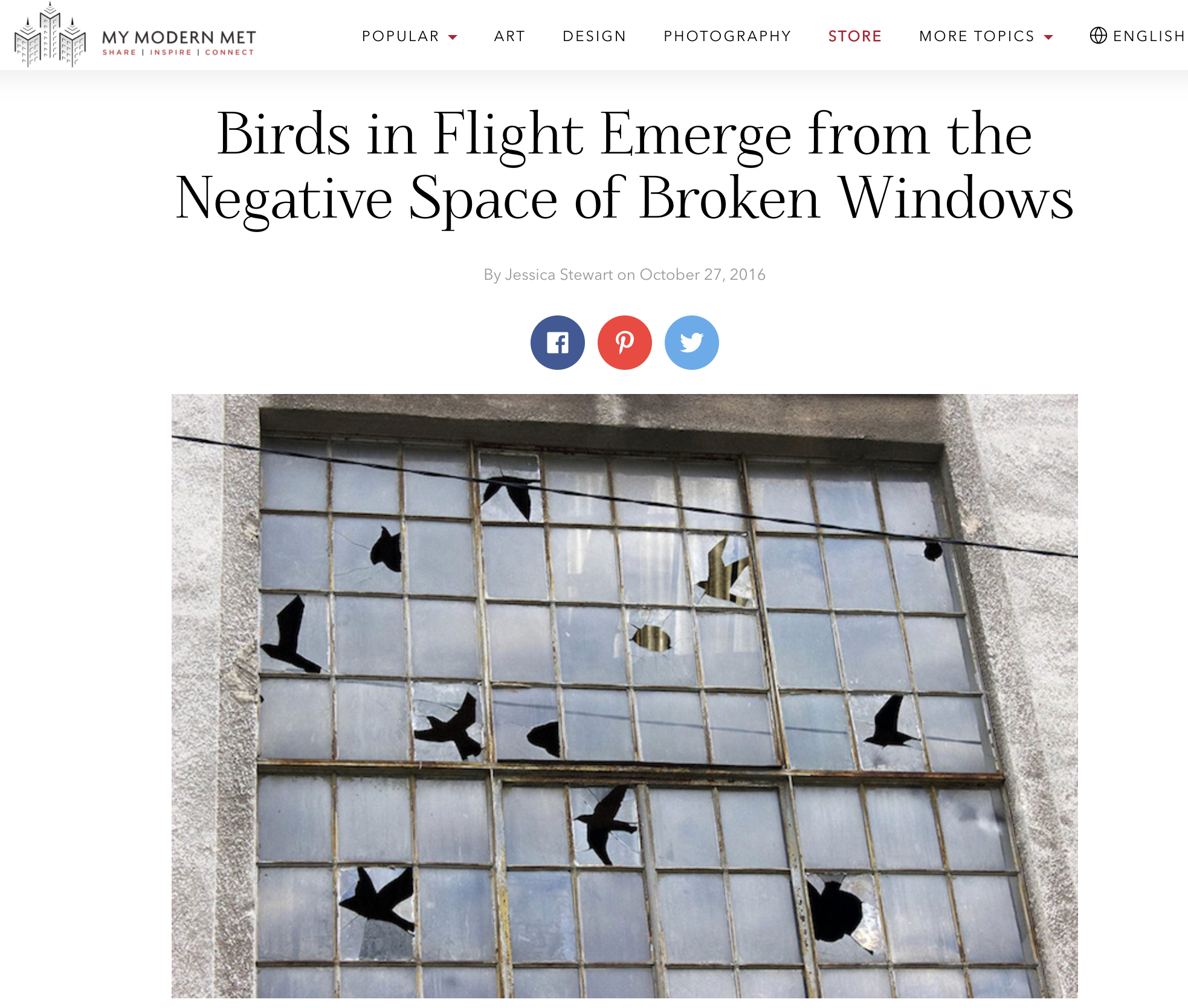
Camoflage by Pejac. Silvestre Santiago, better known as Pejac, is a Spanish painter and street artist. He was born in 1977 in Santander, Cantabria, Spain. He studied Fine Arts in Salamanca and then Barcelona. In 2001, Santiago continued his studies in Italy at the Accademia di Belle Arti di Milano. Today the artist lives in Santander.
Inspired by the work of Belgium Surrealist Rene Magritte, Pejac plays with the idea of negative space in this installation piece. Explore images of the piece via the My Modern Met article
Questions to Ask Children
What do you see?
What has the artist done in this piece?
How does this piece of art make you feel?
What do you think the artist is trying to say?
Dusciana Bravura
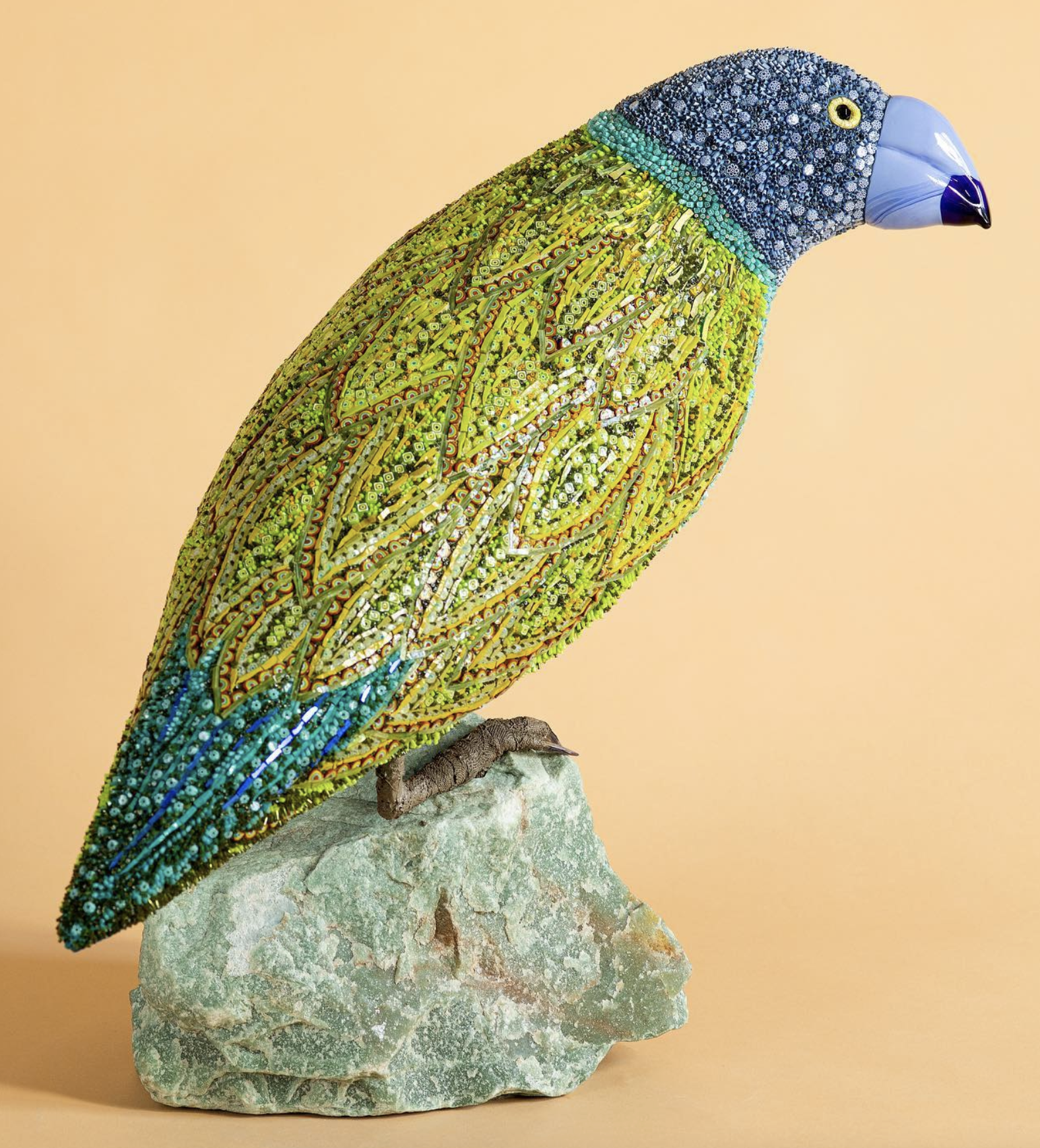
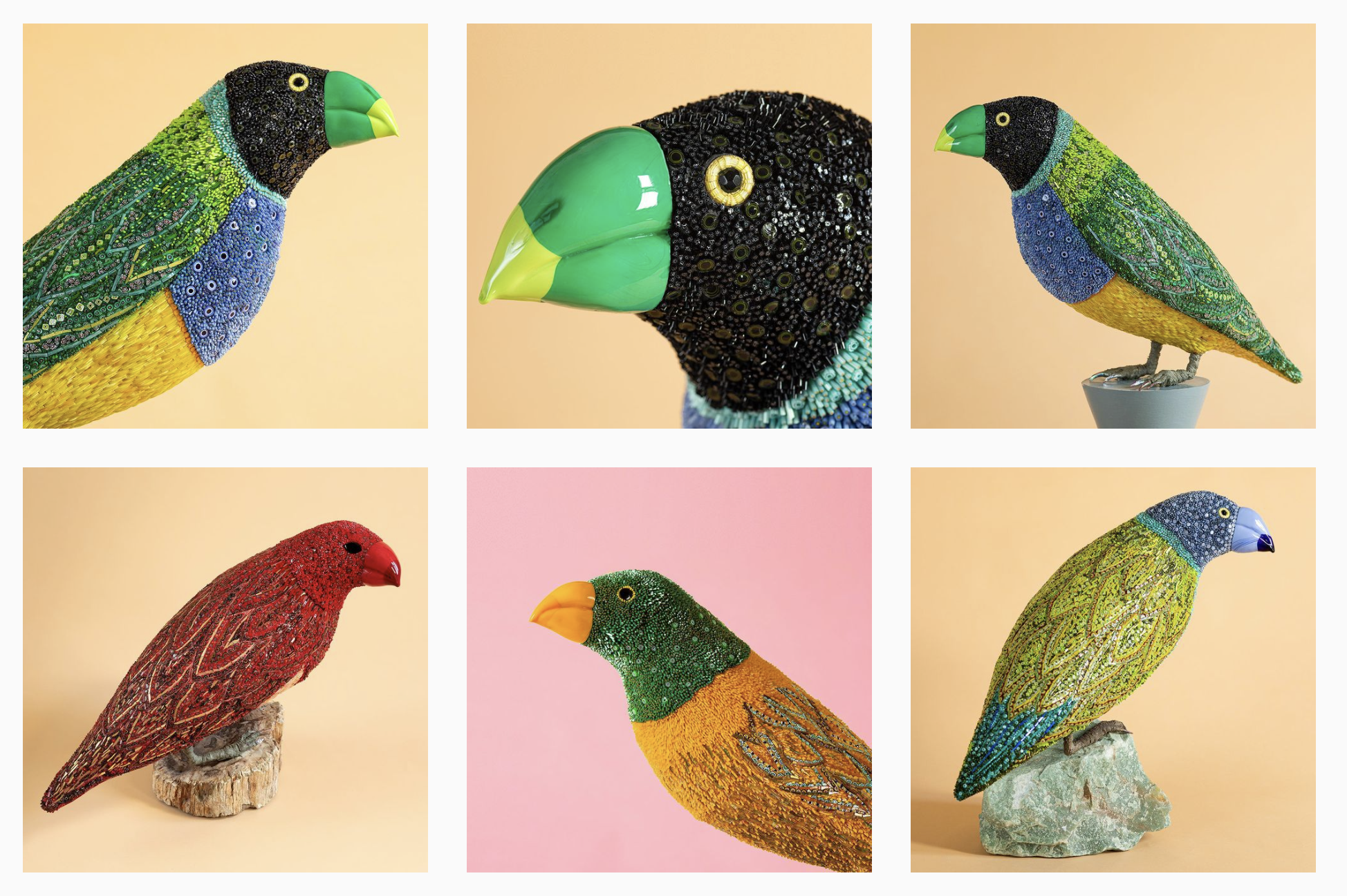
Dusciana Bravura is an Italian Sculptor and Interior Designer.
Questions to Ask Children
What words would you use to describe these sculptures?
Can you imagine how Dusciana makes her work?
How do they make you feel?
What do you think the artist is trying to say?
This Talking Points Is Used In…
Pathway: Making Birds
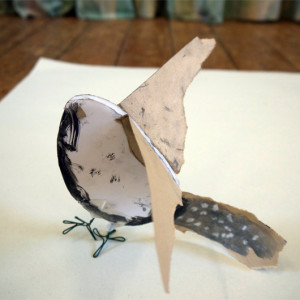
using sketchbooks to make visual notes

Show me what you see

You Might Also Like…
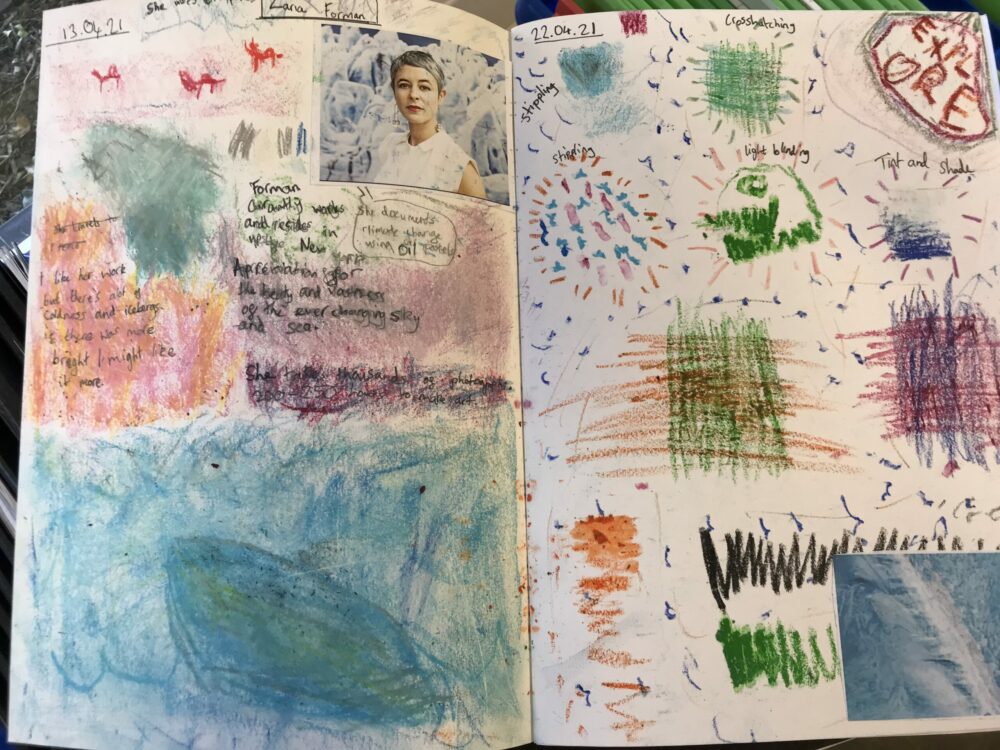
The Sketchbook Journey
Explore the AccessArt Sketchbook Journey to grow your understanding about what sketchbooks are and how they might be used.
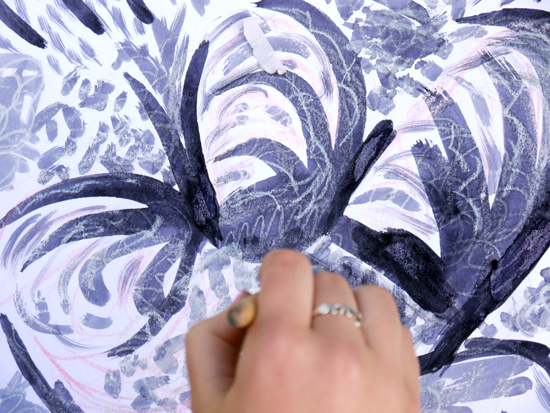
The AccessArt Network
Join our network on facebook and continue the conversation, share and support.
Sketchbooks are powerful tools. Enjoy these three videos in which Jo Blaker shares why sketchbooks have secret powers.
*If you are having issues viewing videos it may be due to your schools firewall or your cookie selection. Please check with your IT department.*
Sketchbook Powers Number 1 & 2
Secret powers numbers 1 and 2: Jo describes how sketchbooks can be a door into a hidden world, and a place to explore what you feel like as a person.
Sketchbook Power Number 3
Secret power number 2: Sketchbooks can be a weapon; a weapon you can use to fight boredom, ease anxiety, and find gratitude.
Sketchbook Power Number 4
Secret power numbers 4: Sketchbooks can be a laboratory – a safe place to experiment, test and discover.





























